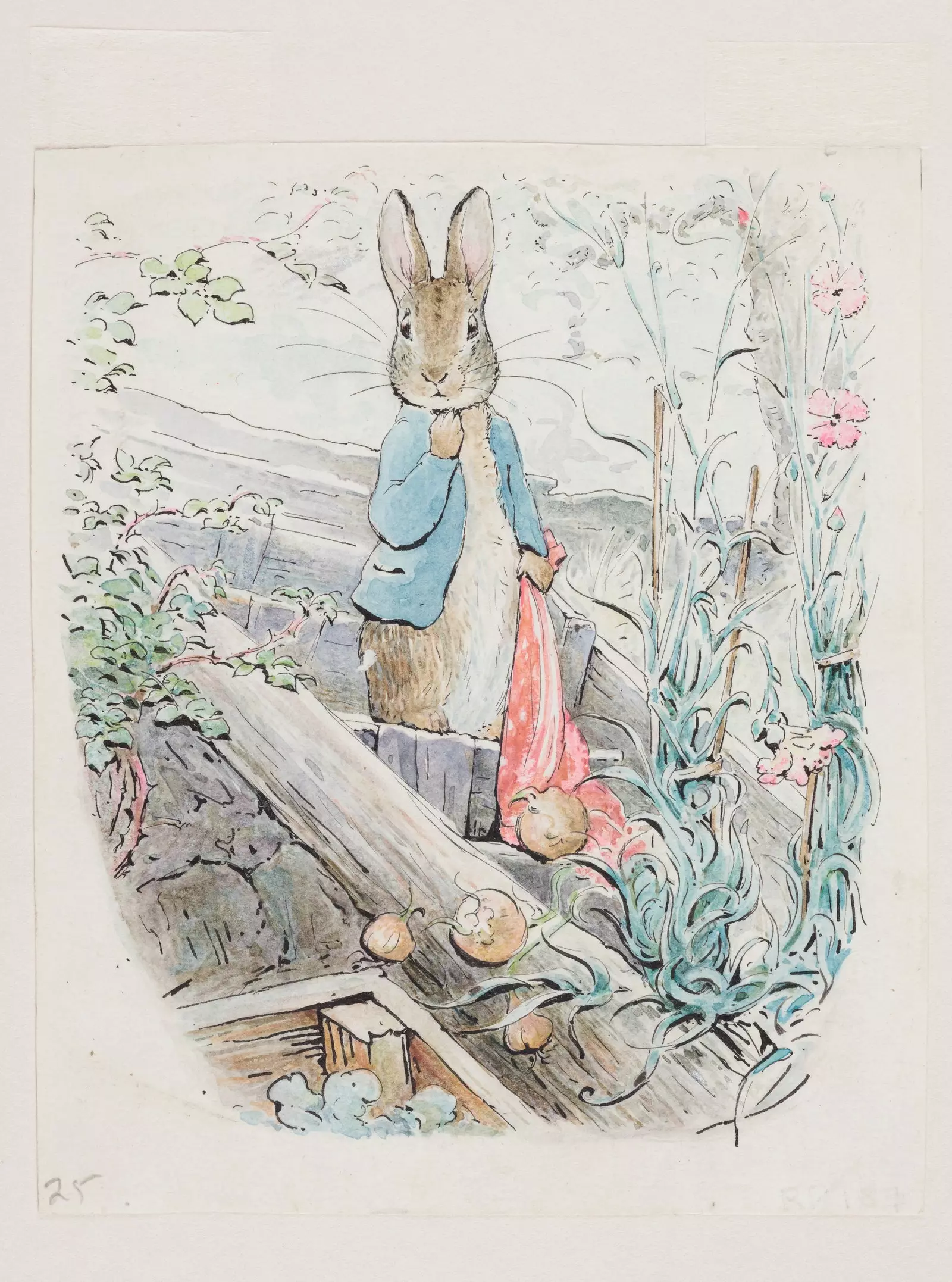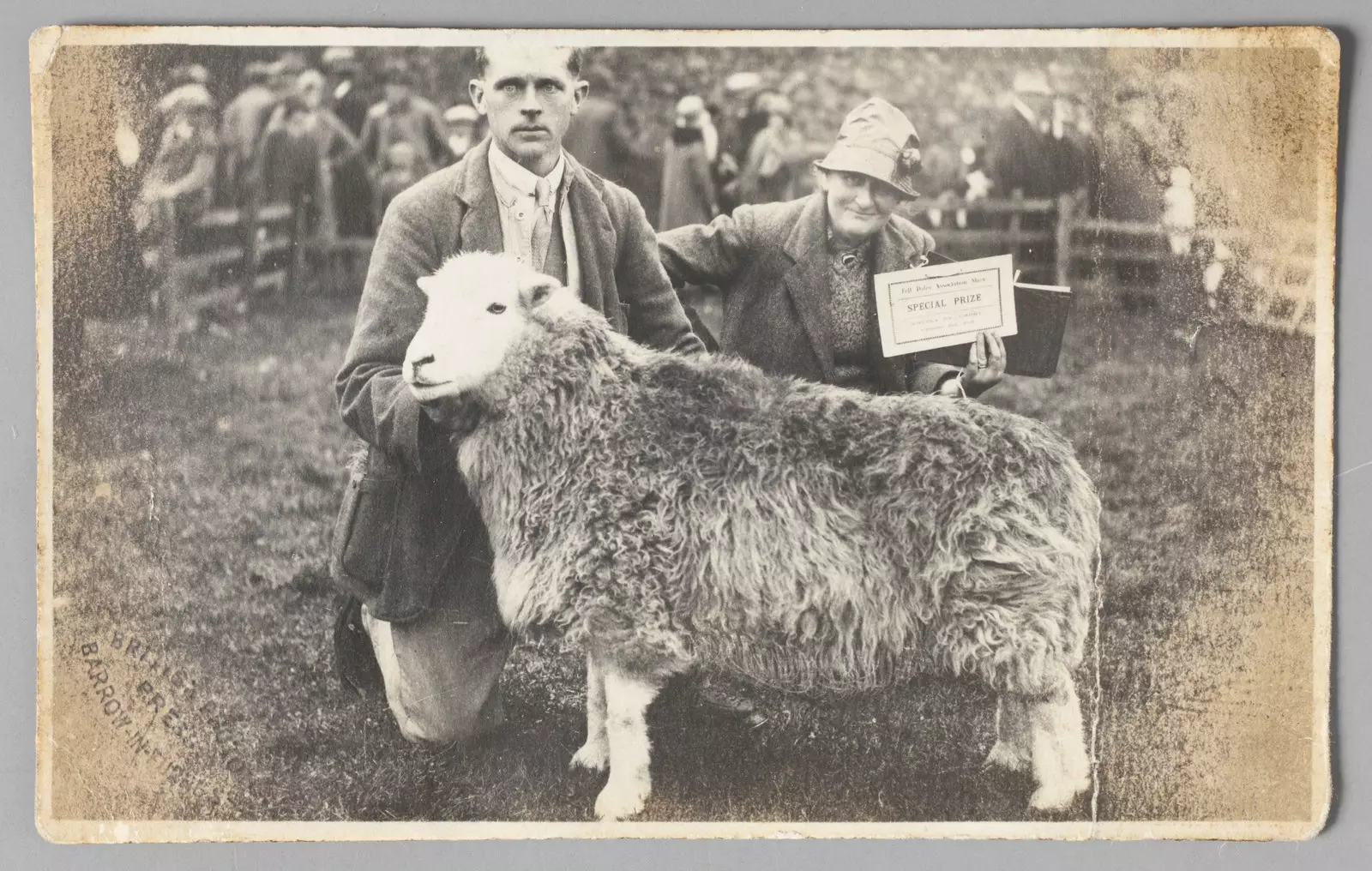Who was Beatrix Potter ? For many boys and girls, who grew up with her stories, she was one of the most emblematic writers of 20th century youth literature. Her stories about a dream world inhabited by animals captivated and continue to do so today.
The exhibition, the first to tell about her life, at the Victoria & Albert Museum in London aims to shed a little more light on Potter in a playful and familiar way. Because, Beatrix, in addition to being a writer, had a multifaceted life, from storyteller to natural scientist and conservationist.
Beatrix Potter: Drawn to Nature displays more than 200 personal objects, including works of art, unpublished letters, manuscripts, sketches, diaries, family photographs, and personal belongings; and hers celebrates her precocious talent for storytelling, her business acumen, and her fascination with the scientific study of the natural world, as well as her passion for sheep, farming, and conservation: a legacy that still lives on today.

Beatrix Potter Illustrations
FROM HIS CHILDHOOD IN SOUTH KENSINGTON TO HIS END IN LAKE DISTRICT
The exhibition is divided into four sections and follows Potter's journey from London to the Lake District, where she eventually settled. The first section, Town and Country , talks about her childhood in South Kensington, London; under the microscope highlights Potter's interest in the natural sciences, while A Natural Storyteller reveals her almost accidental journey that made her a best-selling author. Finally, Living Nature follows Potter to the Lake District and celebrates her profound impact on the natural landscape.
The objective of the exhibition is that the visitor ends up with a feeling of knowing much more about this exceptional woman.
“Beatrix Potter was a 'city mouse' who wished she were a 'country mouse' . The exhibition invites visitors to follow her journey from Victorian London to the moors of the Lake District. Many will be familiar with the extraordinary legacy of Potter's tales, but in this exhibition you will discover how her talent for bringing her characters to life grew out of a long-standing curiosity about the small details of nature, which might have led her elsewhere. career path. We hope to inspire the next generation of artists and storytellers, but also natural scientists, conservationists, and farmers. Potter's story shows that through talent, passion and perseverance, life can take unexpected turns and great things can come from inconsequential beginnings.” Annemarie Bilclough, Frederick Warne Head of Illustration at the V&A.

Tom Storey and Beatrix Heelis with prize-winning ewe, 26 September 1930. Photographic print, published by the British Photo Press.
In the first part of the exhibition, the visitor will be able to explore more about her childhood in Bolton Gardens . Right here are key objects from Potter's early years, including an album of family photos taken by her father, as well as artwork and furniture from her family home. In addition, to explore the places where the family spent their vacations, which clearly inspired her stories - the first ones were when she was nine years old.
Next, as the protagonist grows, some of the his first observation sketches , from a collection of wild animals at school to a cabinet used by Beatrix and her brother Bertram to store their collection of
butterflies, beetles, bird eggs, shells, rocks and fossils.
Beatrix's career was unexpectedly relaunched thanks to the illustrated letters she sent to friends of her family. They led her to publish her first short story in 1901, The Tale of Peter Rabbit. It is in the last part of the exhibition where we can see sketches of some of her best-known stories, such as The Tale of Two Bad Mice, The Tale of Mr. Jeremy Fisher or The Tale of Benjamin Bunny.
The end of the exhibition references the last 30 years of the writer's life, which she spent preserving and protecting the Lake District leaving a legacy of over 4,000 acres of land, farms and cottages.
Beatrix Potter: Drawn to Nature is on view until January 8, 2023.
